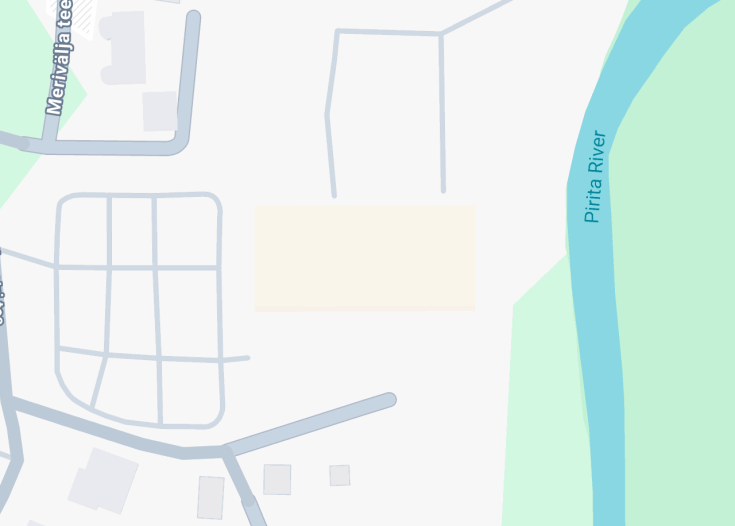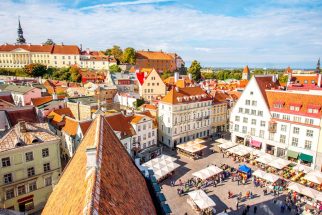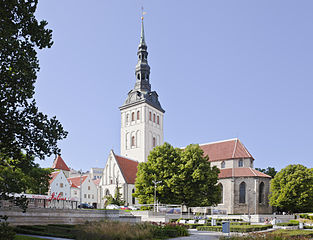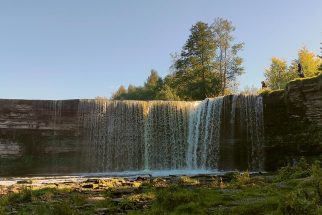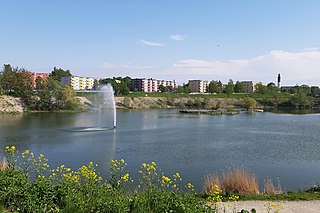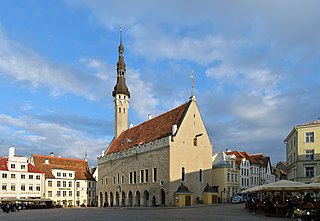Birgitta Convent Ruins: A Historical Gem in Tallinn
Discover the Birgitta Convent Ruins nestled in the heart of Tallinn, Estonia. This remarkable site offers a captivating glimpse into the region’s medieval past. Originally established in the 15th century, the convent was a significant religious and cultural center for the Bridgettine Order. Today, the ruins stand as a testament to enduring history, attracting both history enthusiasts and curious tourists alike.
Visitors can stroll through the remnants of ancient walls and arches, imagining the daily lives of the convent’s inhabitants. The site is beautifully integrated into the modern urban landscape, providing a serene escape from the bustling city streets. Educational plaques and guided tours offer deeper insights into the architectural and historical significance of the ruins. Whether you’re interested in architecture, history, or simply seeking a picturesque spot, the Birgitta Convent Ruins offer a unique and enriching experience in Tallinn.
Things to See and Do at Birgitta Convent Ruins in Tallinn
At the Birgitta Convent Ruins, visitors can engage in a variety of activities that bring history to life. Guided Tours are available, led by knowledgeable guides who share fascinating stories and facts about the convent’s past. Explore the architecture of the remaining structures, including the intricate stonework and historic foundations that highlight the convent’s original grandeur.
Photography Opportunities
The picturesque ruins provide excellent photography opportunities. Capture the interplay of light and shadow among the ancient stones, or take panoramic shots of the surrounding cityscape from this elevated vantage point.
Educational Workshops
Participate in educational workshops that delve into the Bridgettine Order’s influence on the region, offering a deeper understanding of the convent’s role in Tallinn’s development.
Relaxation and Reflection
Find a peaceful spot among the ruins to relax and reflect, enjoying the serene atmosphere that contrasts with the vibrant energy of modern Tallinn.
An Interesting Fact About Birgitta Convent Ruins in Tallinn
One intriguing fact about the Birgitta Convent Ruins is their connection to Saint Birgitta of Sweden, the founder of the Bridgettine Order. The convent served as a crucial hub for religious and cultural exchange during the Middle Ages. Additionally, the site is rumored to possess hidden underground passages that were used for secretive movements during times of conflict. These mysteries add an extra layer of allure to the ruins, making them not only a place of historical significance but also a source of local legends and folklore.
Discover the Enchanting Birgitta Convent Ruins
The Birgitta Convent Ruins offer a captivating glimpse into Estonia’s rich history, making it a must-visit for history enthusiasts and curious travelers alike. Nestled within Tallinn’s scenic landscapes, this historical site is perfect for those interested in medieval architecture and serene exploration. Visitors can expect to wander through ancient stone structures, marvel at intricate carvings, and soak in the tranquil atmosphere that has been preserved over centuries.
As part of a broader tourist itinerary, the Birgitta Convent seamlessly fits into a day of cultural and historical exploration. Whether you’re planning a comprehensive tour of Tallinn’s historical landmarks or seeking a peaceful retreat from the bustling city center, the convent ruins provide a unique and enriching experience. Professional guides often share fascinating stories and lesser-known facts, enhancing the visit with their expert insights.
For those looking to delve deeper, the site offers unique tips such as the best vantage points for photography or special times of day when the light casts dramatic shadows on the ruins. Exploring these remnants allows visitors to connect with the past while enjoying the beauty of the surrounding nature.
Optimal Times to Explore the Birgitta Convent Ruins in Tallinn
To fully appreciate the Birgitta Convent Ruins, consider visiting during the spring and early autumn. These seasons offer pleasant weather and vibrant scenery, making your exploration more enjoyable. Spring brings blooming flora, while autumn showcases stunning foliage, providing picturesque backdrops for your visit.
Annual Heritage Festival
The annual Heritage Festival is an excellent opportunity to visit the ruins. This event features guided tours, reenactments, and cultural performances that bring the history of the convent to life.
Accessibility and Limitations at the Birgitta Convent Ruins
The Birgitta Convent Ruins strive to accommodate all visitors, though there are some limitations to be aware of.
Accessibility
The site is accessible via well-maintained pathways suitable for most visitors, including those with mobility aids. However, some areas may have uneven surfaces.<
Limitations
- Restricted areas for preservation purposes
- No commercial activities allowed on-site
- Limited parking spaces available
Notes to visitors
- Photography is permitted in designated areas
- Visitors are encouraged to maintain silence to preserve the site’s tranquility
- Guided tours are available but not mandatory
General Informations
Plan your visit to the Birgitta Convent Ruins with ease by considering the following details.
Location
The ruins are conveniently situated near the historic Old Town, a short distance from the main transportation hubs.
Address:
Viru Väljak, 10140 Tallinn, Estonia
Visiting Information
The Birgitta Convent Ruins are open to the public year-round without strict closing times. Visitors can freely explore the site at their own pace, making it a flexible addition to any travel itinerary. Early mornings and late afternoons are recommended for the best lighting and fewer crowds.
How to Reach Birgitta Convent Ruins
Getting to the Birgitta Convent Ruins is straightforward with multiple transportation options available from Tallinn’s city center.
By Car
The ruins can be easily reached by car. Parking is available at the nearby parking structure for a nominal fee. Additionally, several parking lots are situated within walking distance.
| Route |
Distance |
Travel time |
| From Tallinn Central Station |
2 miles (3.2 km) |
10 minutes |
| From Tallinn Airport |
10 miles (16 km) |
20 minutes |
| From Old Town |
1 mile (1.6 km) |
5 minutes |
By Public Transport
Public buses frequently run from Tallinn’s main bus stations to the vicinity of the convent ruins. The journey is both economical and efficient, with multiple stops near the site.
| Route |
Distance |
Travel time |
| Bus 12 |
2 miles (3.2 km) |
15 minutes |
| Bus 5 |
2.5 miles (4 km) |
18 minutes |
| Tram 3 |
1.8 miles (2.9 km) |
12 minutes |
Nearby Attractions
- Old Town – 1 mile (1.6 km)
- Alexander Nevsky Cathedral – 1.2 miles (1.9 km)
- Toompea Castle – 1.5 miles (2.4 km)
- Kumu Art Museum – 2 miles (3.2 km)
- Tallinn City Museum – 1.3 miles (2.1 km)
- Estonian Open Air Museum – 4 miles (6.4 km)
- St. Olaf’s Church – 1.4 miles (2.3 km)
- Seaplane Harbour – 2.5 miles (4 km)
- Freedom Square – 0.8 miles (1.3 km)
- Patricia Plaza – 1.6 miles (2.6 km)
- Lennusadam – 2.2 miles (3.5 km)
- Kalamaja District – 2.1 miles (3.4 km)
Common Questions
What is the historical significance of the Birgitta Convent Ruins in Tallinn?
The Birgitta Convent Ruins, also known as the Bridgettine Monastery, hold significant historical value in Tallinn, Estonia. Established in the late 15th century, the convent was part of the Bridgettine Order, which was founded by Saint Bridget of Sweden. This order was unique as it combined both contemplative nuns and active monks living in a single community, promoting a balanced spiritual and communal life. Throughout its history, the convent served as a center for religious study and spiritual retreat. It played a crucial role in the cultural and religious life of medieval Tallinn, influencing local architecture, education, and social welfare. The dissolution of the convent occurred during the Protestant Reformation in the 16th century, leading to its eventual abandonment and the subsequent decay of its structures. Today, the ruins stand as a testament to the medieval religious heritage of Estonia. They offer insights into the architectural styles of the period, the daily lives of the Bridgettine community, and the broader historical transitions that the region underwent. Preservation efforts have aimed to maintain the integrity of the ruins, allowing visitors and historians alike to appreciate their enduring legacy.
What architectural features can be observed in the Birgitta Convent Ruins?
The Birgitta Convent Ruins showcase a blend of Gothic and Brick Gothic architectural styles, characteristic of medieval ecclesiastical structures in Northern Europe. Visitors can observe several notable features: 1. Vaulted Ceilings: The convent once had impressive vaulted ceilings, typical of Gothic architecture, which provided both structural support and an aesthetically pleasing interior. 2. Brick Facades: Utilizing locally sourced bricks, the convent’s exterior walls exemplify the Brick Gothic style, prevalent in the Baltic region during the time of its construction. 3. Arched Windows and Doors: Pointed arches adorn the convent’s windows and main entrances, a hallmark of Gothic design that allows for larger window spaces and the influx of natural light. 4. Cloisters: Central to the convent’s layout, the cloister provided a serene space for contemplation and communal activities, surrounded by covered walkways and gardens. 5. Chapel Remnants: Remnants of the chapel, including altar areas and decorative stonework, highlight the religious functions of the convent and its artistic embellishments. 6. Defensive Elements: Some sections of the ruins suggest fortified aspects, such as thick walls and limited entry points, indicative of the need for protection during tumultuous periods. Overall, the architectural elements of the Birgitta Convent Ruins reflect both the spiritual aspirations and the practical necessities of monastic life in medieval Estonia.
How did the Bridgettine Order influence the development of the convent in Tallinn?
The Bridgettine Order played a pivotal role in shaping the development of the Birgitta Convent in Tallinn. Founded by Saint Bridget of Sweden in the 14th century, the order emphasized a dual community of contemplative nuns and active monks, fostering a balanced spiritual and communal life. This unique structure influenced the convent’s organization, architecture, and daily practices. Community Structure: The convent was designed to accommodate both nuns and monks, promoting cooperation and shared governance. This harmonious coexistence facilitated robust educational and charitable activities, aligning with the order’s mission. Architectural Design: The Bridgettine emphasis on communal living spaces led to the construction of expansive cloisters, communal dining halls, and dedicated areas for study and prayer. The architectural layout was meticulously planned to support the daily routines and spiritual needs of the community. Educational and Spiritual Influence: The order’s focus on education and spiritual development resulted in the establishment of libraries, scriptoriums, and classrooms within the convent. These facilities became centers for learning, attracting scholars and fostering intellectual growth in Tallinn. Charitable Works: Reflecting the Bridgettine commitment to charity, the convent engaged in various social services, including caring for the poor and sick. This philanthropic approach enhanced the community’s relationship with the surrounding populace and solidified its role as a pillar of support. In summary, the Bridgettine Order’s principles and practices significantly influenced the structural, cultural, and functional aspects of the Birgitta Convent, leaving a lasting impact on its legacy in Tallinn.
What role did the Birgitta Convent play in Tallinn's medieval society?
The Birgitta Convent was a cornerstone of Tallinn’s medieval society, fulfilling multiple roles that extended beyond its religious functions. As a Bridgettine establishment, it served as a hub for spiritual guidance, education, and social welfare. Spiritual Leadership: The convent provided religious services, guidance, and a space for contemplation, catering to both the monastic community and laypeople seeking spiritual solace. Educational Center: It housed a library and scriptorium, fostering learning and literacy. The convent educated not only its members but also contributed to the broader intellectual landscape of Tallinn by producing manuscripts and offering instruction. Economic Influence: The convent was involved in various economic activities, including agriculture, crafts, and trade. These endeavors supported the convent’s self-sufficiency and created economic ties with local merchants and farmers. Social Services: Demonstrating the Bridgettine commitment to charity, the convent offered assistance to the poor, the sick, and travelers. This role enhanced the community’s social fabric and reinforced the convent’s position as a benevolent institution. Cultural Impact: Through art, architecture, and patronage, the convent influenced Tallinn’s cultural development. Its architectural styles and artistic commissions contributed to the city’s aesthetic heritage. Overall, the Birgitta Convent was integral to Tallinn’s medieval society, shaping its religious, educational, economic, and social dimensions.
What led to the decline and eventual ruin of the Birgitta Convent in Tallinn?
The decline and eventual ruin of the Birgitta Convent in Tallinn can be attributed to several historical and socio-political factors: 1. Protestant Reformation: The Reformation, which swept through Northern Europe in the 16th century, had a profound impact on Catholic institutions. As Estonia adopted Lutheranism, many Catholic monasteries and convents, including the Birgitta Convent, faced dissolution. The shift in religious ideology led to reduced support and funding for the convent. 2. Political Turmoil: The region experienced various political conflicts, including wars and changes in rule, which disrupted the stability and security necessary for the convent’s operations. These upheavals often resulted in the repurposing or neglect of monastic properties. 3. Economic Decline: Economic hardships, possibly exacerbated by wars and shifting trade routes, diminished the resources available to maintain the convent. Without adequate financial support, the structures fell into disrepair. 4. Neglect and Vandalism: Over time, the abandonment of the convent led to neglect. Natural decay, combined with potential vandalism or repurposing of materials by locals, contributed to the structural degradation of the buildings. 5. Natural Disasters: While not extensively documented, natural events such as fires, storms, or earthquakes could have accelerated the ruin of the convent structures. By the time historical records were chronicled, the Birgitta Convent had largely fallen into ruin, serving as a historical landmark rather than an active religious institution.
Are there any legends or folklore associated with the Birgitta Convent Ruins?
Yes, the Birgitta Convent Ruins in Tallinn are steeped in local legends and folklore that add a mystical dimension to the historical site: 1. Ghost Stories: Many locals and visitors have reported sightings of apparitions believed to be former nuns or monks who once inhabited the convent. These ghostly tales often revolve around unexplained noises, shadows, and fleeting glimpses of figures in traditional monastic attire. 2. Secret Tunnels: Legends speak of hidden underground passages connecting the convent to other parts of Tallinn. These tunnels are said to have been used for clandestine movements during times of conflict or to safeguard relics and treasures from invaders. 3. Hidden Treasure: Folklore suggests that the convent housed valuable relics and treasures, some of which remain concealed within the ruins. Stories vary, with some claiming that the treasure is cursed, deterring those who seek it from uncovering its secrets. 4. Haunted Chapel: The remains of the chapel are often the focal point of supernatural tales. It’s believed that the spirit of a devoted nun continues her eternal vigil, ensuring the sanctity of the holy space. 5. Miraculous Events: Accounts from centuries past recount miraculous occurrences, such as unexplained healing or divine apparitions witnessed by the convent’s inhabitants and surrounding communities. These legends and folklore not only enrich the cultural tapestry of the Birgitta Convent Ruins but also enhance its allure as a site of historical mystery and intrigue.
What efforts have been made to preserve the Birgitta Convent Ruins?
Preserving the Birgitta Convent Ruins has been a priority for both local and national heritage organizations, ensuring that this historical site remains intact for future generations. Key preservation efforts include: 1. Restoration Projects: Carefully planned restoration initiatives have been undertaken to stabilize the remaining structures. These projects focus on reinforcing walls, repairing damaged sections, and preventing further deterioration caused by weather and age. 2. Archaeological Studies: Comprehensive archaeological excavations have been conducted to uncover and document the convent’s historical layers. These studies provide valuable insights into the site’s construction, usage, and evolution over time. 3. Conservation Techniques: Advanced conservation methods are employed to preserve delicate architectural elements and artifacts. This includes controlling environmental factors like humidity and temperature to mitigate decay. 4. Protective Legislation: The ruins are protected under national heritage laws, which regulate any alterations, restorations, or public access to ensure the site’s preservation aligns with historical integrity standards. 5. Public Awareness and Education: Efforts to educate the public about the convent’s historical significance foster a sense of community responsibility towards its preservation. Informative plaques, guided tours, and educational programs highlight the importance of maintaining the ruins. 6. Funding and Grants: Securing financial support from governmental bodies, private donors, and international heritage organizations has been crucial in sustaining preservation activities and ensuring ongoing maintenance. 7. Collaboration with Experts: Partnerships with historians, architects, and conservation specialists facilitate informed decision-making and the implementation of best practices in preservation. Through these multifaceted efforts, the Birgitta Convent Ruins are being diligently preserved, maintaining their historical essence while allowing for continued study and appreciation.
What archaeological findings have been discovered at the Birgitta Convent site?
Archaeological excavations at the Birgitta Convent Ruins have unearthed a wealth of artifacts and structural elements that shed light on the convent’s historical and daily life. Notable findings include: 1. Architectural Remnants: Excavations have revealed foundations of buildings, including the chapel, cloisters, and living quarters. These structural remnants provide insights into the architectural styles and construction techniques of the period. 2. Religious Artifacts: Items such as crosses, religious texts, and liturgical objects have been discovered, indicating the spiritual activities that took place within the convent. These artifacts help illustrate the religious practices and the role of the convent in the community’s spiritual life. 3. Everyday Items: Findings of pottery, utensils, and personal belongings offer a glimpse into the daily lives of the convent inhabitants. These items reflect the material culture, diet, and domestic practices of the Bridgettine community. 4. Burial Sites: Archaeologists have identified burial grounds associated with the convent, containing graves of nuns, monks, and possibly benefactors. These sites provide valuable information on burial customs, health, and demographics of the era. 5. Monetary and Trade Goods: Coins, trade tokens, and remnants of trade goods suggest the convent’s involvement in economic activities and its connections with broader trade networks. 6. Environmental Evidence: Pollen samples, seeds, and animal bones have been analyzed to reconstruct the environmental conditions and agricultural practices around the convent, offering insights into sustainability and resource management. 7. Structural Modifications: Evidence of renovations and expansions over time indicates the convent’s growth and adaptation to changing needs, as well as responses to external pressures such as political changes or economic shifts. These archaeological discoveries are instrumental in piecing together the historical narrative of the Birgitta Convent, enriching our understanding of its significance in Tallinn’s past.
Can visitors explore the interior of the Birgitta Convent Ruins?
Exploring the interior of the Birgitta Convent Ruins is possible, but it requires adherence to certain guidelines to preserve the site’s integrity and ensure visitor safety: 1. Guided Tours: Many preservation efforts include offering guided tours led by knowledgeable guides. These tours provide historical context, highlight significant features, and ensure that visitors navigate the site responsibly. 2. Restricted Access: Certain areas within the ruins may be restricted to protect fragile structures or ongoing conservation work. Visitors are encouraged to stay within designated paths to minimize impact. 3. Safety Measures: The convent ruins may have uneven terrain, loose stones, or fragile sections. Visitors should exercise caution, wear appropriate footwear, and follow safety instructions provided by site managers. 4. Educational Signage: Informative plaques and signs are often placed throughout the ruins, offering insights into different parts of the convent, historical events, and architectural details. These enhance the visitor experience without the need for direct access to all interior spaces. 5. Photography Restrictions: While photography is generally allowed, flash usage or the removal of artifacts is prohibited to protect the site. Visitors should respect all posted guidelines regarding photography. 6. Accessibility: Given the historical nature of the site, accessibility may be limited. Visitors with mobility issues should check in advance for any available accommodations or alternative viewing options. 7. Preservation Policies: To maintain the site’s condition, visitors are expected to follow all preservation policies, such as not touching or disturbing artifacts, refraining from climbing on structures, and leaving no litter behind. By respecting these guidelines, visitors can safely and respectfully explore the interior of the Birgitta Convent Ruins, gaining a deeper appreciation for its historical and cultural significance.
What is the current condition of the Birgitta Convent Ruins?
The Birgitta Convent Ruins in Tallinn are in a state of partial preservation, reflecting both the passage of centuries and concerted preservation efforts. Key aspects of the current condition include: 1. Structural Integrity: While many of the foundational walls and key architectural elements remain standing, some structures show signs of wear and deterioration. Restoration projects have focused on reinforcing these areas to prevent further collapse. 2. Architectural Features: Certain Gothic features, such as pointed arches and brickwork, are still discernible. However, decorative elements may have weathered over time, requiring careful preservation to maintain their visibility and integrity. 3. Overgrowth and Landscaping: Vegetation has reclaimed parts of the ruins, with vines and plants growing over and around the structures. While aesthetically enhancing, this overgrowth can also contribute to structural decay if not managed properly. 4. Accessibility: Paths and walkways have been established to allow visitors to navigate the site safely. These areas are maintained to balance accessibility with the preservation needs of the ruins. 5. Artifacts and Exhibits: Any artifacts discovered during archaeological studies are typically housed in local museums, where they are preserved and displayed. Information panels and exhibits at the site provide context without physically altering the ruins. 6. Lighting and Signage: Adequate lighting and clear signage have been installed to enhance visitor experience and highlight significant areas, while ensuring that these additions do not detract from the historical ambiance. 7. Conservation Efforts: Ongoing conservation initiatives aim to address issues such as moisture control, structural reinforcement, and the protection of remaining artworks or inscriptions. Overall, the Birgitta Convent Ruins are maintained as a historical monument, balancing public access with the need to preserve their architectural and cultural heritage. Visitors can appreciate the site’s enduring beauty while understanding the importance of its careful upkeep.
How does the Birgitta Convent Ruins contribute to Tallinn's cultural heritage?
The Birgitta Convent Ruins are a vital component of Tallinn’s rich cultural heritage, contributing in several meaningful ways: 1. Historical Insight: As a remnant of the medieval Bridgettine Order, the ruins provide tangible evidence of Tallinn’s religious and social history. They offer insights into the spiritual life, architectural practices, and community structures of the time. 2. Architectural Heritage: The convent’s architectural features, such as Gothic vaults and brickwork, enhance Tallinn’s architectural diversity. They complement other historical sites in the city, creating a cohesive narrative of Tallinn’s development through the ages. 3. Cultural Identity: The ruins embody the resilience and continuity of Tallinn’s cultural identity, reflecting the city’s ability to preserve and honor its past amidst modernization and change. 4. Educational Value: Serving as an educational resource, the Birgitta Convent Ruins offer opportunities for learning and research. Schools, universities, and scholars utilize the site to study medieval history, architecture, and religious studies. 5. Tourism Attraction: As a historical landmark, the ruins attract tourists interested in history and architecture, contributing to Tallinn’s economy and global cultural footprint. 6. Community Engagement: Local communities engage with the site through events, preservation efforts, and storytelling, fostering a sense of pride and stewardship towards their heritage. 7. Artistic Inspiration: The evocative atmosphere of the ruins has inspired artists, writers, and photographers, enriching Tallinn’s cultural scene with creative expressions influenced by the site’s historical ambiance. In essence, the Birgitta Convent Ruins are a cornerstone of Tallinn’s cultural landscape, intertwining history, architecture, education, and community pride to sustain and celebrate the city’s enduring heritage.
What are some nearby attractions to the Birgitta Convent Ruins in Tallinn?
Visitors to the Birgitta Convent Ruins in Tallinn can explore a variety of nearby attractions that complement their historical tour: 1. Tallinn Old Town: A UNESCO World Heritage site, the Old Town is renowned for its well-preserved medieval architecture, cobblestone streets, and historic landmarks, including Town Hall Square and St. Olaf’s Church. 2. Toompea Castle: Situated on Toompea Hill, this castle houses the Estonian Parliament and offers panoramic views of the city. Its grounds include the Alexander Nevsky Cathedral, a striking example of Russian Revival architecture. 3. Kiek in de Kök: A medieval tower and museum providing insights into Tallinn’s defensive history. Visitors can explore exhibits on the city’s fortifications and enjoy interactive displays. 4. St. Nicholas’ Church (Niguliste Museum): This Gothic church now serves as an art museum, featuring a collection of medieval and contemporary art, including stained glass windows and ecclesiastical artifacts. 5. Seaplane Harbour (Lennusadam): An innovative maritime museum housed in a historic seaplane hangar, showcasing maritime history, naval vessels, and interactive exhibits suitable for all ages. 6. Kadriorg Palace and Park: A Baroque palace built for Catherine I of Russia, surrounded by beautifully landscaped gardens. The palace now houses the Art Museum of Estonia’s foreign collection. 7. Tallinn City Museum: Located in various historical buildings, the museum offers comprehensive exhibits on Tallinn’s history, culture, and development from medieval times to the present. 8. Pikk Street and Rotermann Quarter: A blend of historic and modern architecture, this area features shops, restaurants, and cultural venues, providing a vibrant urban experience. Exploring these attractions alongside the Birgitta Convent Ruins allows visitors to immerse themselves in Tallinn’s diverse historical and cultural offerings.
Are there any guided tours available for the Birgitta Convent Ruins?
Yes, guided tours are available for the Birgitta Convent Ruins, providing visitors with in-depth knowledge and enhanced experiences of the site. These tours typically include: 1. Historical Narratives: Guides offer detailed accounts of the convent’s history, the Bridgettine Order, and the role the site played in Tallinn’s development. This context enriches the visitor’s understanding of the ruins. 2. Architectural Insights: Expert guides explain the architectural features and construction techniques used in the convent, highlighting Gothic elements and the structural significance of remaining buildings. 3. Archaeological Findings: Information on archaeological excavations and discoveries at the site are shared, offering insights into the daily lives of the convent’s inhabitants and the artifacts uncovered. 4. Legends and Folklore: Guides often share local legends, ghost stories, and folklore associated with the ruins, adding a captivating narrative layer to the historical facts. 5. Interactive Exploration: Some tours include interactive elements, such as scavenger hunts or themed walks, engaging visitors in a more participatory exploration of the site. 6. Accessibility Options: Guided tours cater to various accessibility needs, ensuring that all visitors can enjoy and learn from the experience. 7. Language Availability: Tours are offered in multiple languages to accommodate international visitors, ensuring a broader audience can benefit from the information provided. 8. Group and Private Tours: Both group and private tour options are available, allowing flexibility for different visitor preferences and schedules. To participate in a guided tour, visitors can contact local tourism offices, heritage organizations, or book through official tour operators specializing in Tallinn’s historical sites. Booking in advance is recommended, especially during peak tourist seasons.
What should visitors know before visiting the Birgitta Convent Ruins?
Before visiting the Birgitta Convent Ruins in Tallinn, visitors should be aware of several important considerations to ensure a safe and enjoyable experience: 1. Preservation Guidelines: Respect the site’s historical significance by adhering to all preservation rules. Avoid touching or disturbing any structures or artifacts, and follow designated paths to minimize impact. 2. Safety Precautions: The ruins may have uneven surfaces, loose stones, and fragile sections. Wear sturdy footwear, be cautious while walking, and supervise children to prevent accidents. 3. Weather Considerations: Tallinn’s weather can be unpredictable. It’s advisable to check the forecast and dress appropriately, bringing rain gear or sun protection as needed. 4. Accessibility: The site may have limited accessibility for individuals with mobility challenges. Verify any available accommodations or alternative access options prior to your visit. 5. Guided Tours: Consider joining a guided tour for a more informative and structured visit. Tours often provide valuable insights and ensure that you experience the highlights of the ruins. 6. Photography Policies: While photography is generally permitted, avoid using flash in sensitive areas. Refrain from removing any items or attempting to alter the site for photographs. 7. Local Regulations: Familiarize yourself with any local regulations, such as restrictions on food and beverages within the ruins, to ensure compliance during your visit. 8. Time Management: Allocate sufficient time to explore the site thoroughly. Early mornings or weekdays may offer a quieter and more immersive experience. 9. Nearby Amenities: Identify nearby facilities such as restrooms, cafes, or souvenir shops to enhance your visit’s convenience and comfort. 10. Cultural Sensitivity: Recognize the site’s cultural and historical importance. Maintain a respectful demeanor, especially in areas of solemn significance. By keeping these considerations in mind, visitors can fully appreciate the Birgitta Convent Ruins while contributing to their preservation and respectful enjoyment.
HelloMondo review

"The Birgitta Convent Ruins offer a fascinating glimpse into Tallinn's history. A must-see for history enthusiasts."
Is the Birgitta Convent Ruins in Tallinn, Estonia Worth Visiting?
The Birgitta Convent Ruins provide a captivating experience for visitors interested in historical sites. Nestled in the heart of Tallinn, the ruins offer a serene atmosphere and a chance to explore the remnants of a once-thriving convent. While the site may lack extensive facilities, its architectural beauty and the surrounding scenic views make it a worthwhile stop for tourists. Additionally, the location is easily accessible, allowing for a convenient addition to your Tallinn itinerary. Whether you’re a history buff or simply looking to enjoy some peaceful time away from the city’s hustle, the Birgitta Convent Ruins are a valuable destination to consider.










